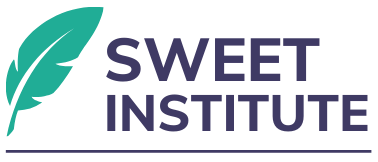The SWEET Model Across All Therapeutic Modalities: A Meta-Framework for Depth, Flexibility, and Transformation

The SWEET Model Across All Therapeutic Modalities: A Meta-Framework for Depth, Flexibility, and Transformation
Abstract
Mental health clinicians are often trained in specific modalities—CBT, DBT, psychodynamic therapy, ACT, EMDR, etc.—yet many struggle with knowing when and how to integrate these models in complex clinical scenarios. The SWEET Model offers a unifying meta-framework that guides clinicians across all therapeutic approaches by grounding their work in four foundational layers: conscious, preconscious, unconscious, and existential. This article explores how the SWEET Model provides a stable scaffold that empowers clinicians to move flexibly and effectively across modalities without losing depth, coherence, or direction.
Keywords
SWEET Model, SWEET Institute, integrative therapy, psychotherapy, layered healing, clinical flexibility, transformation, meta-framework, applied cognitive neuroscience
Introduction
As the field of psychotherapy evolves, so does the demand for clinicians who are not just modality-driven but person-centered, integrative, and adaptable. Yet without a guiding framework, eclecticism risks becoming fragmented or superficial (Goldfried & Messer, 1992). The SWEET Model addresses this gap by offering an integrative transformation map that anchors clinicians in a deeper understanding of the human experience—across all therapeutic modalities.
Theoretical Framework
At its core, the SWEET Model is not a therapy technique; it is a framework for transformation grounded in four layers:
- Conscious Layer → Targets behavior, cognition, and symptom regulation (Beck, 1976).
- Preconscious Layer → Illuminates patterns, narratives, and emotional habits.
- Unconscious Layer → Engages core wounds, defenses, trauma imprints, and relational transference (Freud, 1915/1957).
- Existential Layer → Explores values, meaning, freedom, and the human condition (Frankl, 1985; Yalom, 1980).
Therapists can use any modality within this layered structure, integrating content and process without being limited to one school of thought.
Application and Analysis
Cognitive-Behavioral Therapy (CBT): Typically targets the conscious and preconscious layers. With the SWEET Model, clinicians are prompted to also consider unconscious beliefs and existential meaning behind the symptoms.
Dialectical Behavior Therapy (DBT): While focused on skills training, emotion regulation, and acceptance, the SWEET Model encourages clinicians to link these strategies to unconscious and existential patterns around shame, worth, and identity.
Psychodynamic and Psychoanalytic Therapy: These naturally emphasize the unconscious, but the SWEET Model brings structure to also explore conscious behavioral shifts and existential questions of identity and legacy.
Eye Movement Desensitization and Reprocessing (EMDR): While trauma processing may begin at the somatic or unconscious layer, the SWEET Model supports clinicians in integrating insight across all levels.
Acceptance and Commitment Therapy (ACT): The SWEET Model complements ACT’s focus on values and mindfulness by explicitly situating them within a larger map of consciousness.
Implications
The SWEET Model:
- Equips clinicians to navigate complex cases with coherence and confidence
- Prevents fragmentation in integrative therapy
- Increases depth, personalization, and transformative potential across any modality
- Encourages therapists to practice with both structure and soul
Conclusion
Clinicians don’t need to choose between modalities or guess which one will work. The SWEET Model provides a stable, layered framework that helps therapists move across techniques with direction and depth. It honors the uniqueness of each client while grounding therapy in what truly transforms: the layered dimensions of human experience.
References
- Beck, A. T. (1976). Cognitive therapy and the emotional disorders. International Universities Press.
- Frankl, V. E. (1985). Man’s search for meaning. Beacon Press.
- Freud, S. (1957). The unconscious. In J. Strachey (Ed. & Trans.), The Standard Edition of the Complete Psychological Works of Sigmund Freud (Vol. 14, pp. 159–204). (Original work published 1915)
- Goldfried, M. R., & Messer, S. B. (1992). Psychotherapy integration: An assimilative, psychodynamic approach. Basic Books.
- Yalom, I. D. (1980). Existential psychotherapy. Basic Books.
Download the scholarly version of this article by clicking HERE








